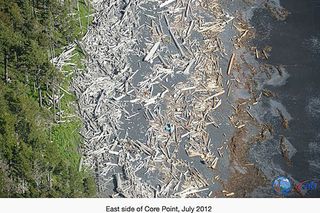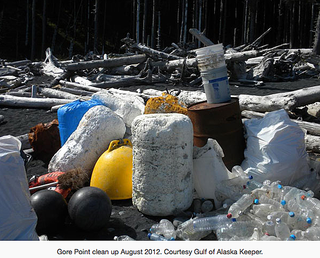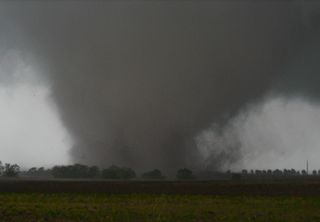
Tsunami Debris Litters Alaska Coast; Clean Up Funds Insufficient

This article was provided by AccuWeather.com.
The beaches of Alaska are piled with debris from the tsunami that struck Japan on March 11, 2011, but restoration to their once pristine condition has slowed, as funding remains scarce.
"The amount of debris washing ashore has vastly exceeded most people's expectation...," said Chris Pallister, Vice President of the Gulf of Alaska Keeper, a non-profit organization dedicated to cleaning marine debris from the coastline of Alaska.
"As soon as the tsunami hit and we saw the videos, we knew the northern Gulf of Alaska shoreline was going to get inundated with tsunami debris," he said. "We said so at an international marine debris conference in March 2011. Our assertion was largely dismissed."
But Pallister's assertion has proved accurate as debris continues to wash ashore in massive quantities.
The debris is no longer only lightweight items such as water bottles and styrofoam. Beaches are now also littered with refrigerators, fuel tanks and other large objects.

Local landfills are struggling to find space for such a large volume of debris.
Sign up for the Live Science daily newsletter now
Get the world’s most fascinating discoveries delivered straight to your inbox.
"We are all scrambling to come up with a solution for this," he said.
Additionally, most of the sites in need of clean up are remote and therefore more difficult and costly to tend to.
According to the Alaska Marine Stewardship Foundation, each of the five Pacific Coast states received $50,000 from the federal government for tsunami debris clean up. Additionally, the Japanese government has gifted the United States $5 million which is being administered by NOAA to individual states.
The Gulf of Alaska Keeper received $49 thousand last September from NOAA and the Alaska Department of Environmental Conservation to remove the debris in the Prince William Sound (PWS).
The Sound clean up demonstrated how bad the situation truly is, Pallister said.
Pallister cites the arrival of tsunami debris as the third major environmental catastrophe the PWS has suffered in the past 50 years.
In 1964, an earthquake devastated PWS communities and natural habitats. The quake generated a tsunami that leveled communities and spread oil, fuel and debris throughout the sound from community crushed fuel depots and structures.
Then, in 1989, an oil spill occurred. "PWS has taken a beating to say the least," Pallister said.
NOAA has received approximately 1,519 official debris reports from across the country as of February 7, according to Keeley Belva, Public Affairs Officer at NOAA.
Only 21 of those items have been confirmed to be tsunami debris. NOAA relies on specific markings, such as japanese text, in order to identify debris. Items without such indications are not classified.
Though the amount of confirmed debris remains low, the Gulf of Alaska Keeper maintains that roughly 75 percent of the shoreline in Alaska has been impacted by tsunami debris.
© AccuWeather.com. All rights reserved. More from AccuWeather.com.
The only sure thing about weather forecasts is that they’re wildly different all over the planet. Test your knowledge on the wild ranges in temperature, precipitation and more.
Extreme Weather Facts: Quiz Yourself

Most Popular


